Stained Glass Windows
The Stained Glass windows of the First Cumberland Presbyterian Church
The Remodeling Committee began to investigate the possibility of stained glass windows for the sanctuary around 1980. Several companies were contacted and finally the committee chose what is called “faceted” glass made by the Statesville Glass Company of Statesville, N.C. The glass is hand cut blinko glass, one inch thick, chipped on the edges of each piece to refract the light with jewel like brilliancy. The glass, set in epoxy, also has an insulation factor.
After much hard work, designs were worked out using the four bays on the east to represent the Old Testament story, and the four on the west side for the New Testament story. Each window contains one main life-size scene in the center with four smaller symbols in the four corners. There are thirty different shades of glass in each window.
The four Old Testament themes represented therein are; the Creation Window, the Moses Window, the David Window, and the Daniel Window. The four New Testament themes represented are: the Life and Teachings of Christ Window, the Pentecost Window, the Resurrection Window, and the Church in the World Window.
The Creation Window
This window symbolizes the universal concept of God’s creation. In the window you will find the Tree of Life laden with fruit, and the serpent of temptation entwined. Cain and Abel are symbolized by two altars with smoke rising, one upward God, because Abel’s offering was acceptable, while Cain’s was not. The flood is also shown with the symbols of the Ark and the rainbow. The Tower of Babel is also symbolized to remind us of the vanity of seeking to become as great as God.
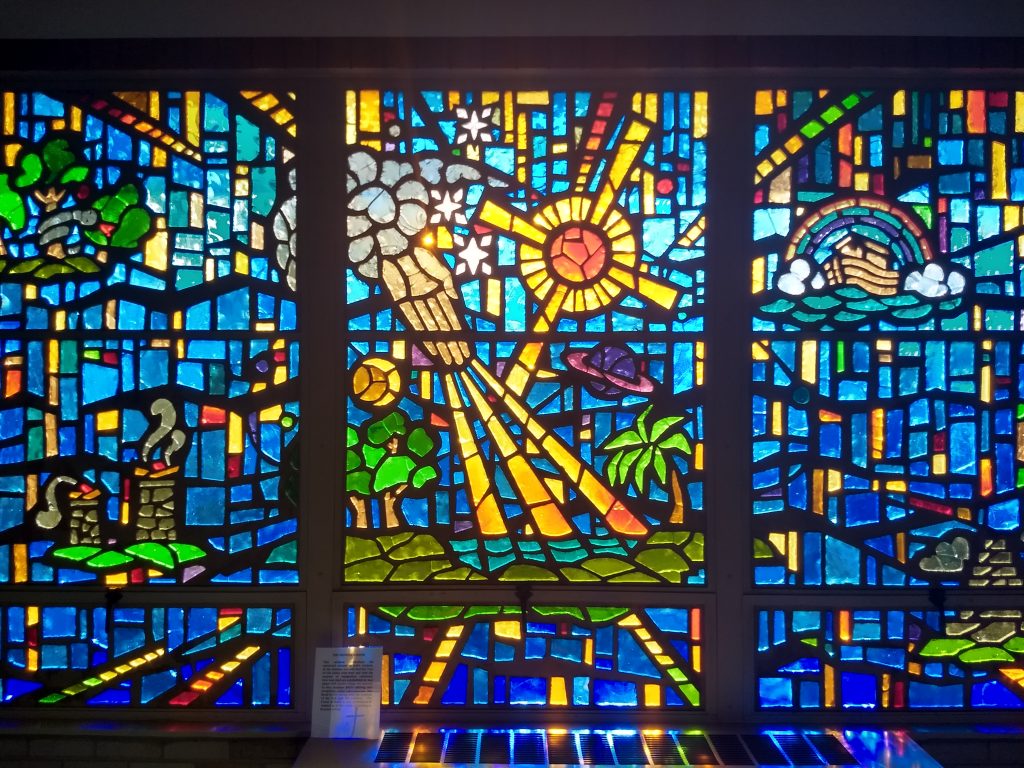
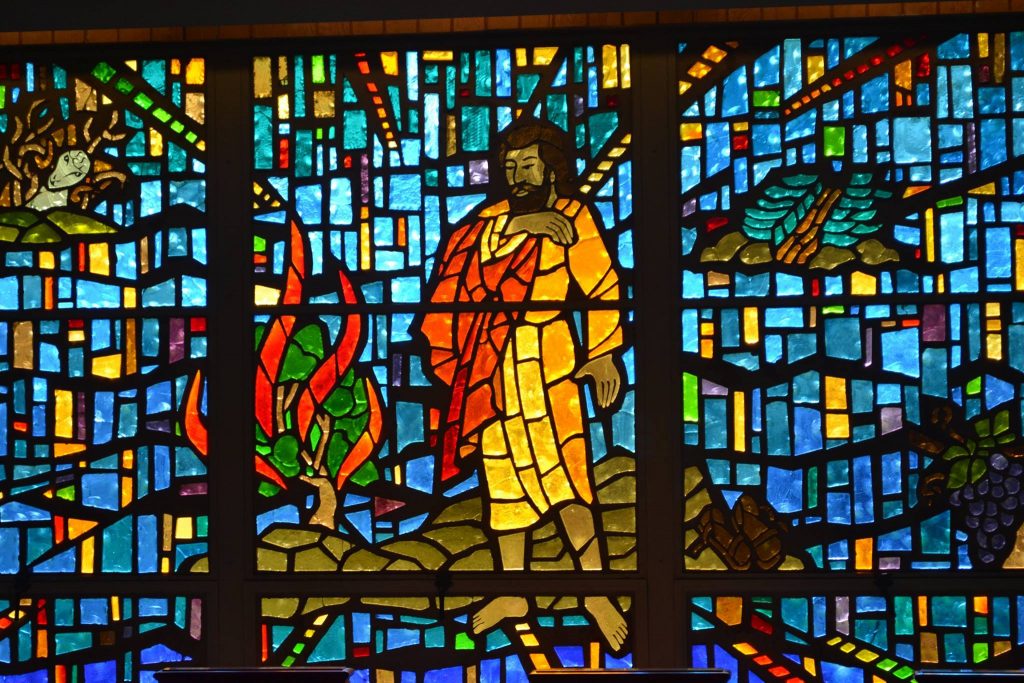
The Moses Window
The Moses Window symbolizes the call of Moses to lead the children of Israel out of Egypt and into the promised land. You will notice the burning bush that was not consumed and the sandals which Moses removed as he approached the bush. Abraham and Isaac are symbolized with the altar, the wood for sacrifice, and the ram caught in a bush. The Ten Commandments are symbolized by the two tablets. The parting of the Red Sea is depicted with the water on either side and a path down the midde. The promised land is symbolized by a bunch of grapes.
The David Window
This window symbolizes David as a boy with his harp. David is integral to the Old Testament because he was the first great King of Israel whose heart was like unto God’s. The torn robe symbolizes the story of Samuel telling Saul about the Lord turning from him. There is also Elijah, the first Great prophet, symbolized by the contest at Mt. Carmel altar, where Elijah asked Israel to choose between God and Baal. Other symbols are of Solomon and his wisdom, depicted by the throne and the infant with the sword. Nehemiah, who rebuilt the walls of Jerusalem after the captivity, is also featured.
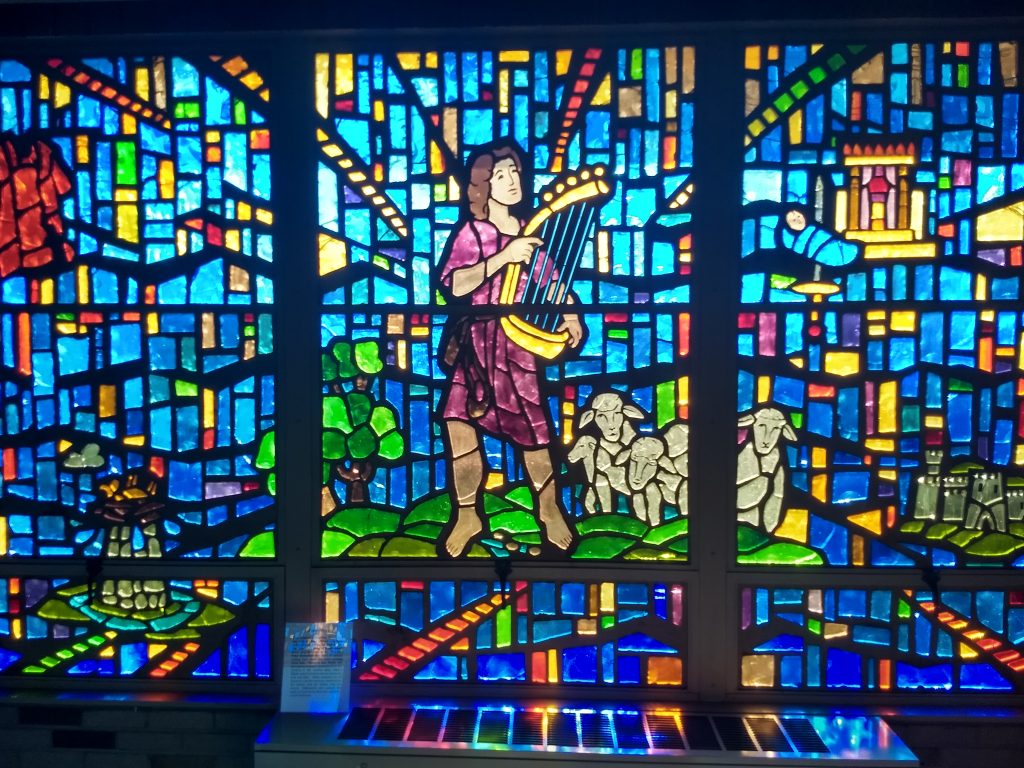
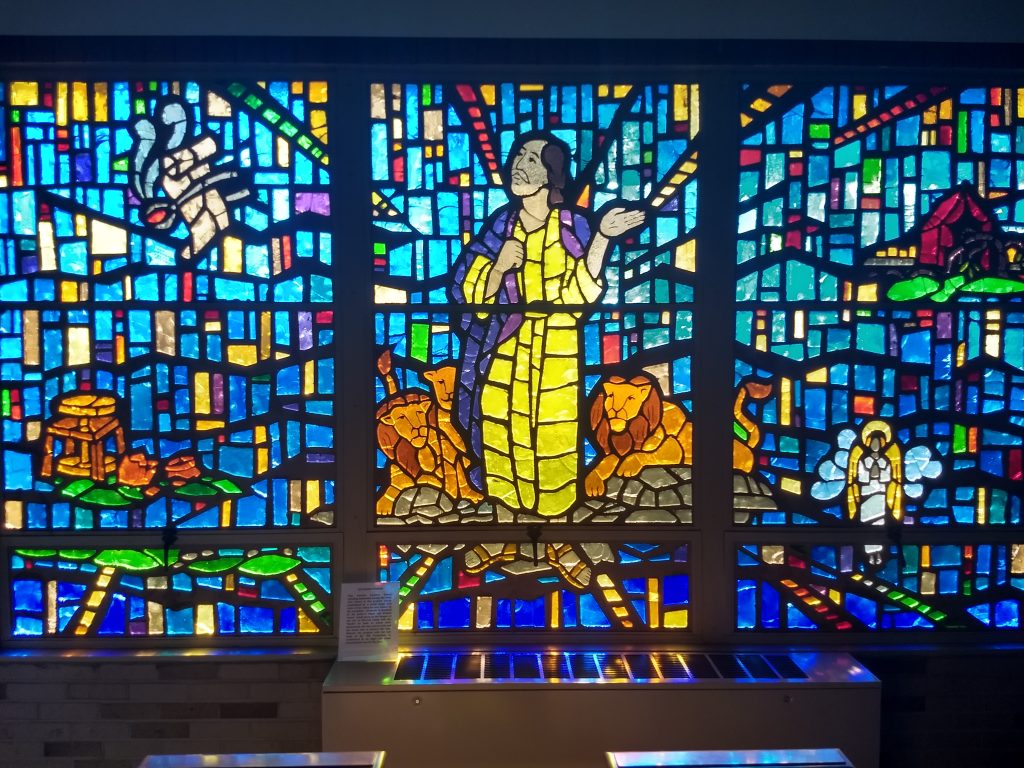
The Daniel Window
This window features Daniel, standing unharmed among the lions. Also shown is the prophet Isaiah, symbolized by a scroll along with coals of fire when he was visited by the seraphim. Jeremiah is depicted by the potter’s wheel and broken vessel. Jonah gives us the images of the city of Ninevah along with the “booth” he built to watch their destruction, the vine sent by God, and the worm sent to destroy the vine. Malachi, the prophet with the last book of the Old Testament, is symbolized by an angel and cloud preparing the way for the Lord.
The Life and Teachings of Christ Window
In this window Jesus is symbolized with hands outstretched, surrounded by listeners. The nativity contains the manger with the Chi Rho, which was the first and second letters of the Greek spelling for Christ. You will also see the star and the three gifts of the wise men. The calling of the disciples is also symbolized, along with the miracle of the basket with loaves of bread and fish by which five thousand were fed. The parable of the sower who sowed seeds; some eaten by birds, some among thorns, some on rocks, and some in good soil.

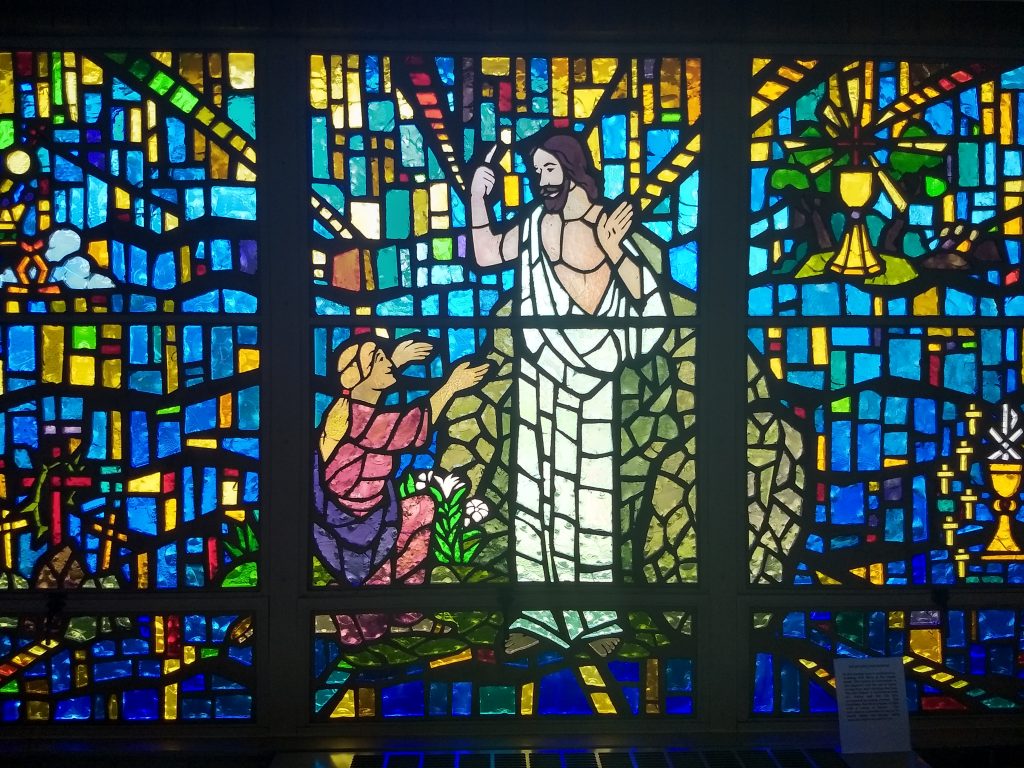
The Resurrection Window
Jesus is symbolized as standing with Mary at the empty tomb. The Garden of Gethsemane is also depicted with the cup of agony among trees with sleeping disciples. The Last Supper is symbolized with the chalice and the Chi Rho surrounded by twelve crosses. The Crucifixion has three crosses on hills with a crown of thorns. The Ascension is symbolized by the Greek words “Alpha” and Omega,” which mean the beginning and the end.
The Pentecost Window
The Pentecost Window is symbolized by the descending dove and the tongues of fire. The Sacrament of Baptism is symbolized by the descending dove as God’s Spirit, and the baptismal font with water. The Lord’s Supper is symbolized by wheat (bread) and grapes (wine) and the chalice. The Lordship of Christ is also symbolized by the cross with orb. The theme of discipleship is also symbolized by an anchor and palm leaves, with a cross entwined with faith, hope and charity.
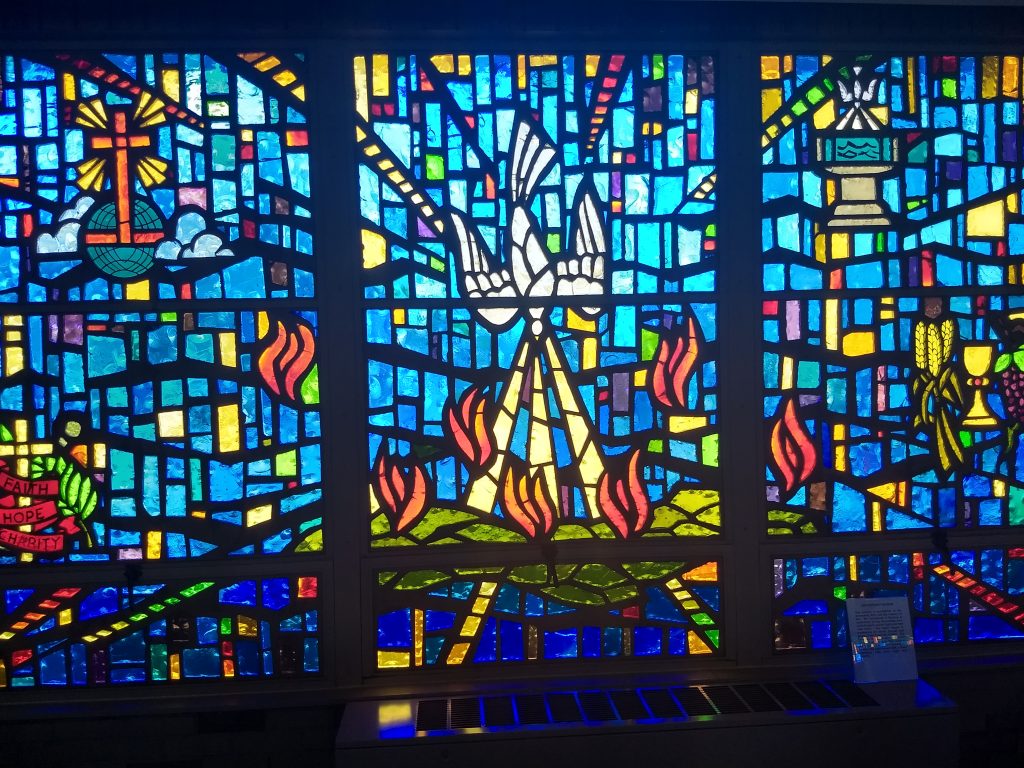
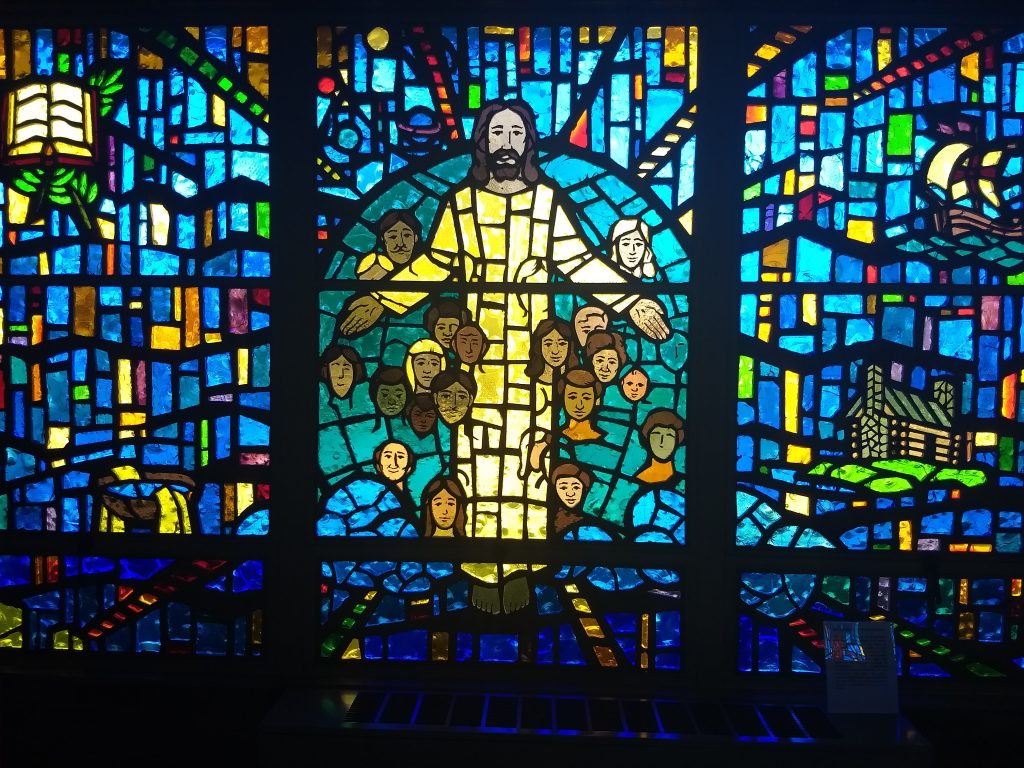
The Church in the World Window
Christ in the World is symbolized with outstretched hands, with the many faces of his followers in the shape of the world, with planets as the universal concept of the church. The Church is symbolized by a ship tossed about by stormy waves upon the ocean of life, yet reaching its destination. The Cumberland Presbyterian denomination is symbolized by a log cabin. The proclamation of the Gospel is symbolized by the open Bible and the mission of the church is that of a towel and basin.